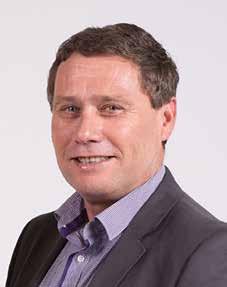
3 minute read
Defence minister commits to rebuilding reserve force
To deliver the people-power needed to advance the Pacific Reset, writes LTCOL (Ret) Dr Simon Ewing-Jarvie, a strong, well-resourced, operationally focused and resilient Reserve Force is key.
Defence Minister Hon Ron Mark launched “Advancing Pacific Partnerships: A Framework for Defence’s Approach to the Pacific” on 29 October at Te Papa in Wellington. This is the latest in a series of Defence Assessments conducted by the Ministry of Defence and designed to provide more detail around the Government’s Strategic Defence Policy Statement 2018.
During questioning, I asked the Minister what role he saw for an enhanced and re-invigorated Reserve Force in delivering what is undoubtedly an ambitious plan to provide the same level of defence priority in the Pacific as in New Zealand.
In answering, he acknowledged that the Reserve Force was run down to unacceptably low levels and that it was vital to desired capabilities, both now and in the future. In particular, he noted that without Reserves, the NZDF could not have undertaken operations on the scale of East Timor, Bougainville, Solomon Islands, Middle East and Afghanistan.

Simon Ewing-Jarvie
The Minister went on to say that the current situation was unacceptable to him and that he had already had several conversations with the Chief of Defence Force, Air Marshal Kevin Short, about reversing the decline of the Reserves. He encouraged continued follow-up on the topic and that we should see something soon.
This is a welcome public commitment and one that really needs urgent follow-through. Numbers exiting service far exceed those being recruited.
It’s important not to forget, however, that this Minister’s party campaigned in 2017 on items such as re-establishment of the air combat force and the creation of an armed Coastguard as a sub-service of the Navy. When asked about why those items didn’t appear in discussions beyond the election, Mr Mark shrugged and said with a smile “That’s politics.”
Therein lies an important cautionary tale. Only actions count. In order to give effect to this commitment, things need to change right away – from recruiting to course cancellations and changing dates for activities that burn off previously supportive employers.
However, the most important change is to make it impossible for the NZDF to ‘re-prioritise’ money tagged for the Reserve Force to shore up training budget deficits in the full-time force.
One Defence official, who did not wish to be named, said that this ‘cashgrab’ was ongoing and really made little difference to the full-time force capability as all front line units are ‘hollow’ anyway (meaning they do not have anywhere near the personnel to fill out their established structures and therefore no amount of training money will get them to the Directed Level of Capability).
One way to offset and eventually stop this ‘cash-grab’ is to allocate supplementary estimates for Reserves now and ring-fence an enhanced vote for Reserve Forces in the next budget and beyond. Appoint a Parliamentary Under-Secretary with responsibility for overseeing the rebuilding of Reserve Forces and link that with the Pacific Leadership Development Programme announced in this paper.
I wrote a five-part series on the Reserve Forces in 2018, including how to go about rebuilding it. The only thing that has changed in that time is that the situation has gotten worse.
Advancing Pacific Partnerships is an excellent read and a useful tool for explaining our foreign affairs and defence intent. However, let’s not be naïve. The unrequited need for defence assistance in the Pacific – even without a major humanitarian disaster – far exceeds anything that New Zealand and Australia combined can deliver on.
We need to start with the basics on this promise and, as the Minister stated in his speech, that is ‘He Tangata’ – people. An extra 1500 full-time soldiers by 2035 – assuming this isn’t an aspirational target like police recruits – is not even a drop in the bucket of need.
Some truly lateral thinking is needed to deliver the people-power needed to advance the Pacific Reset. A strong, well-resourced, operationally focused and resilient Reserve Force is the cornerstone of the solution.
This article was originally published in the blog www.unclas.com










